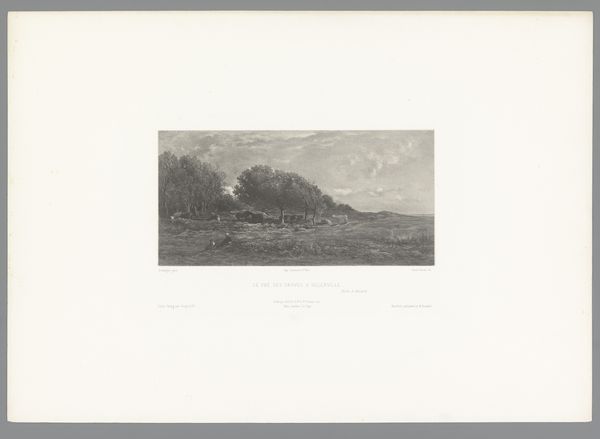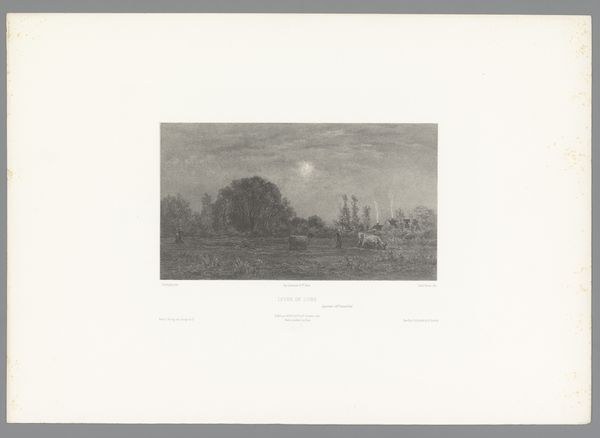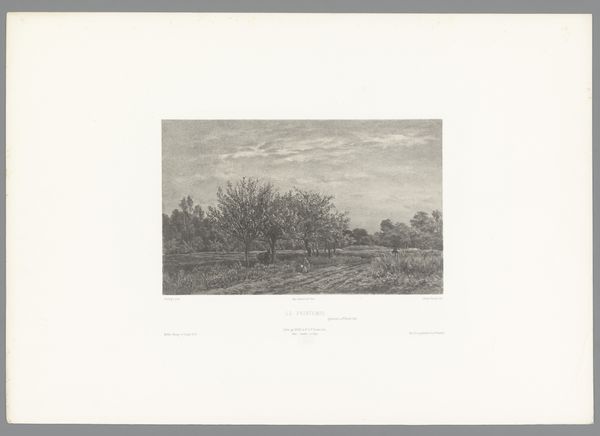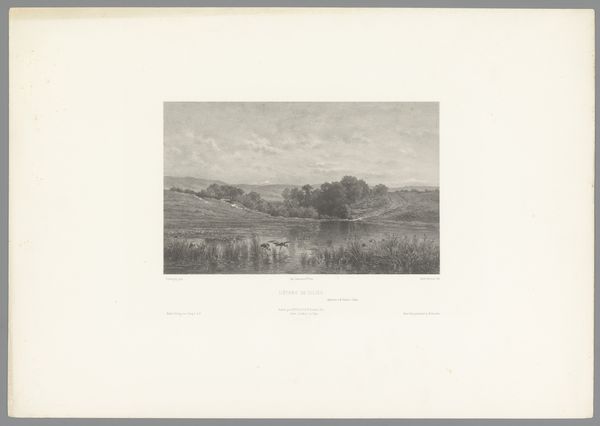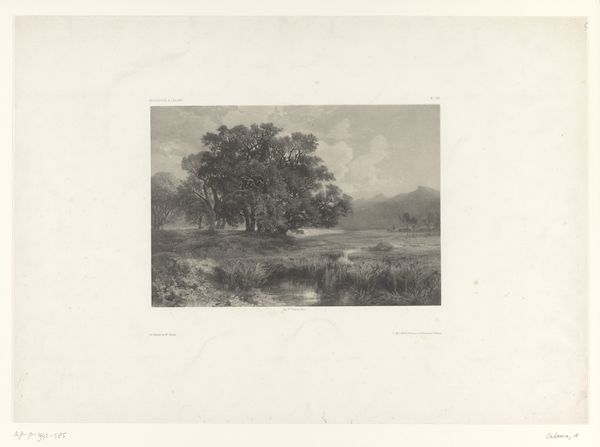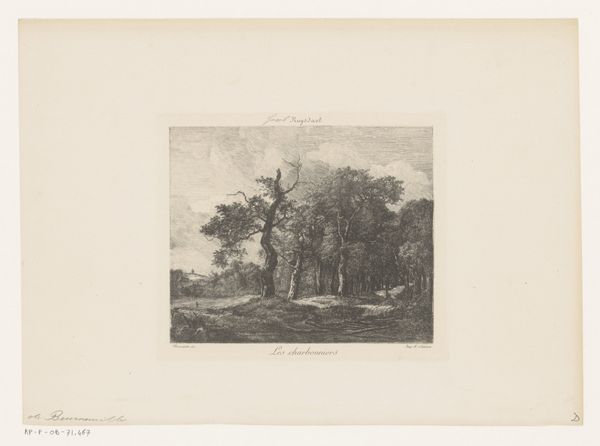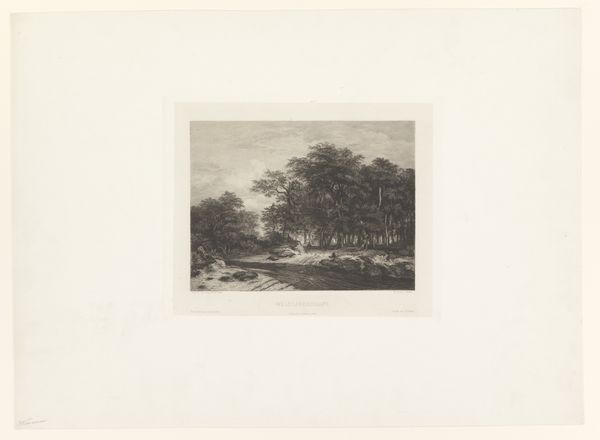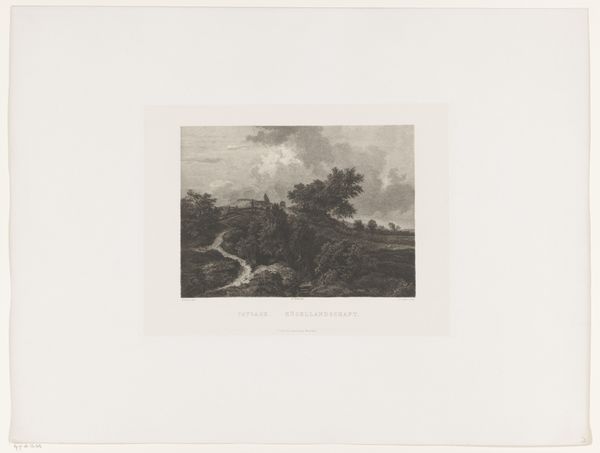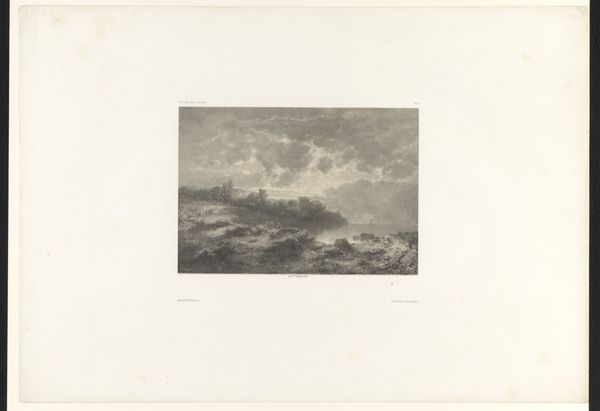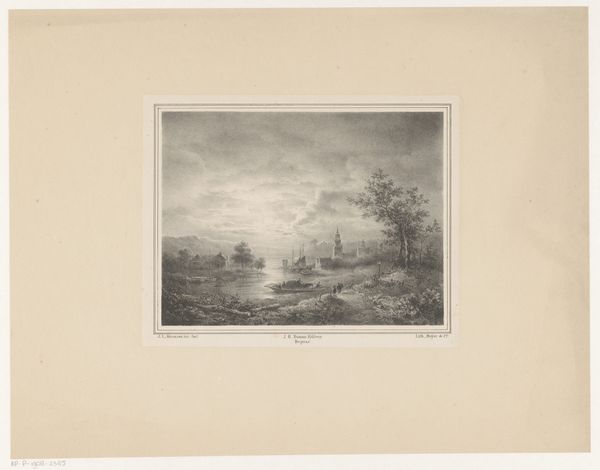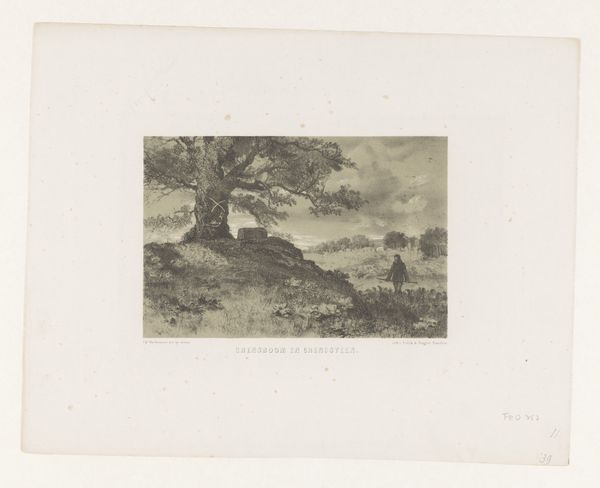
print, etching
# print
#
etching
#
landscape
#
genre-painting
#
realism
Dimensions: height 402 mm, width 570 mm
Copyright: Rijks Museum: Open Domain
"Koeien in een rivier," or "Cows in a river," was made by Emile Louis Vernier, using a technique called etching. It's a printmaking process which relies on the corrosive action of acid to create lines in a metal plate. Vernier would have covered a metal plate with a waxy, acid-resistant substance, then scratched an image into that coating with a needle. After bathing the plate in acid, the exposed lines are eaten away, leaving an image which can then be inked and printed onto paper. The quality of line you get from etching is remarkably precise, lending itself well to the kind of detailed scene Vernier has depicted. By controlling the depth of the etched lines, and therefore the amount of ink they hold, he created a range of tones from light to dark. It’s a labor-intensive process, yet capable of producing multiple originals. Consider the social context of this image, mass produced thanks to a skilled artisan. It speaks to the rise of industrial techniques applied to the world of art, and the commodification of pastoral scenes. The beauty of this work comes not only from its pleasing composition, but also from the artistry inherent in its production.
Comments
No comments
Be the first to comment and join the conversation on the ultimate creative platform.

